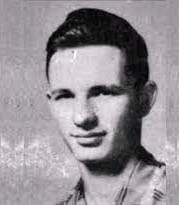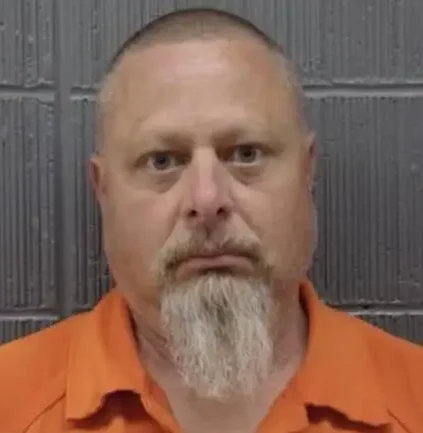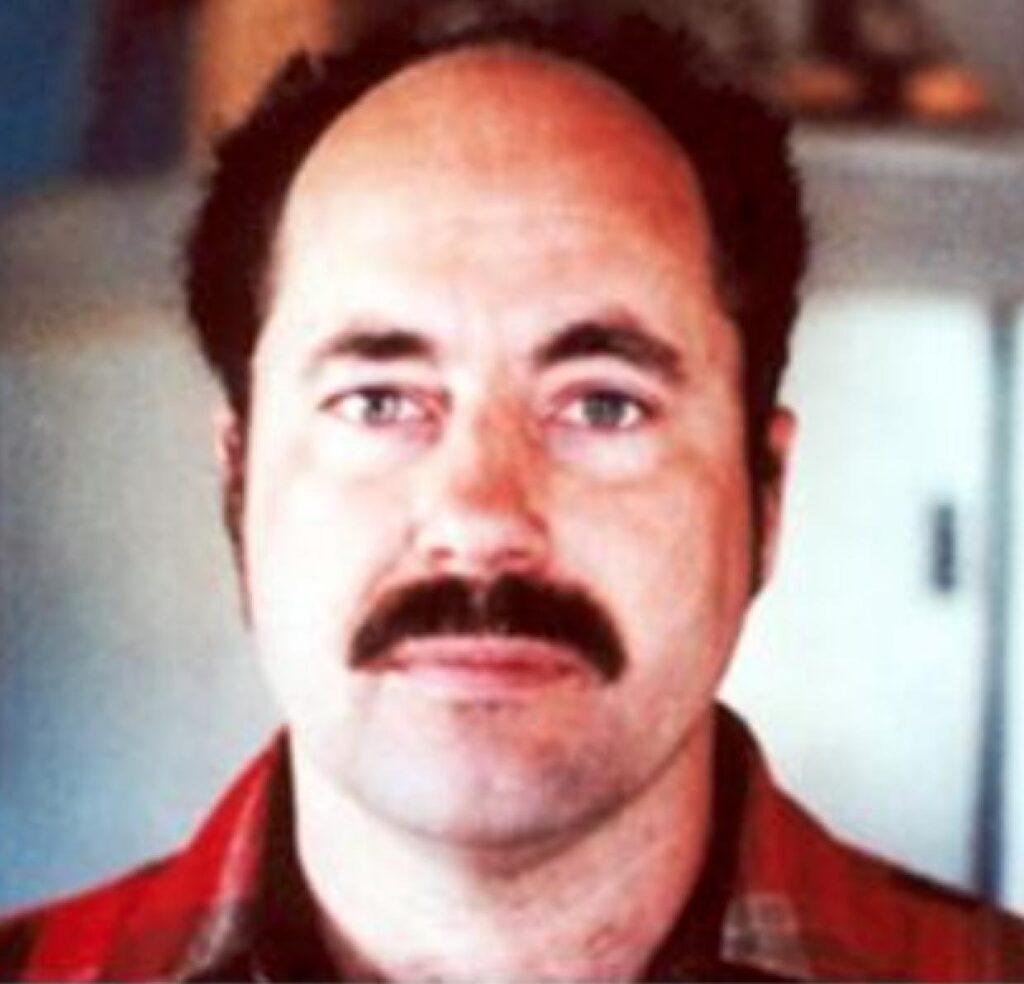
Leonard Lake was born in California in 1945 to father Elgin and mother Gloria Lake. Elgin abandoned the family after the birth of Leonard’s younger brother. Gloria later tried to reunite with him, taking along the two younger children and leaving Leonard in the care of her parents. Leonard was never reunited with his mother even after she divorced and remarried when Leonard was nine. Gloria encouraged her son, Leonard, to take nude photos of girls, including his sister and cousins. As a result of this, Leonard Lake developed a preoccupation with pornography and, later, a penchant for having sex with his sister. Still, he was intact enough to sandwich in two marriages before he teamed up with an illegal immigrant, Charles Ng, to create a torture-bunker in a remote area, where they captured and tortured some two dozen people, reducing their remains to ashes in an adjoining crematorium, mostly women. Men were executed and buried. According to court records, they killed the men and infants immediately, whereas they subjected women to a period of enslavement, rape, and torture before killing them. Lake tortured his victims horrifically, psychologically, sexually and physically.

Charles Ng was born in a wealthy family in British Hong Kong to Hongkonger executive and his wife. As a child, Ng was harshly disciplined and abused by his father. After his arrest for shoplifting at age 15, he went, at his father’s insistence, to a boarding school in North Yorkshire, England. Not long after arriving, Ng was expelled for stealing from other students and returned to Hong Kong. Ng moved to the United States on a student visa in 1978 and studied biology at the College of Notre Dame in Belmont, California. He dropped out after one semester. Soon after, he was involved in a hit and run accident, and to avoid prosecution he enlisted in the United States Marine Corps with false documents attesting to his birthplace as Bloomington, Indiana. After less than a year of service, he was arrested by military police for stealing automatic weapons. Ng escaped custody in 1980 and made his way back to northern California, where he met Leonard Lake.

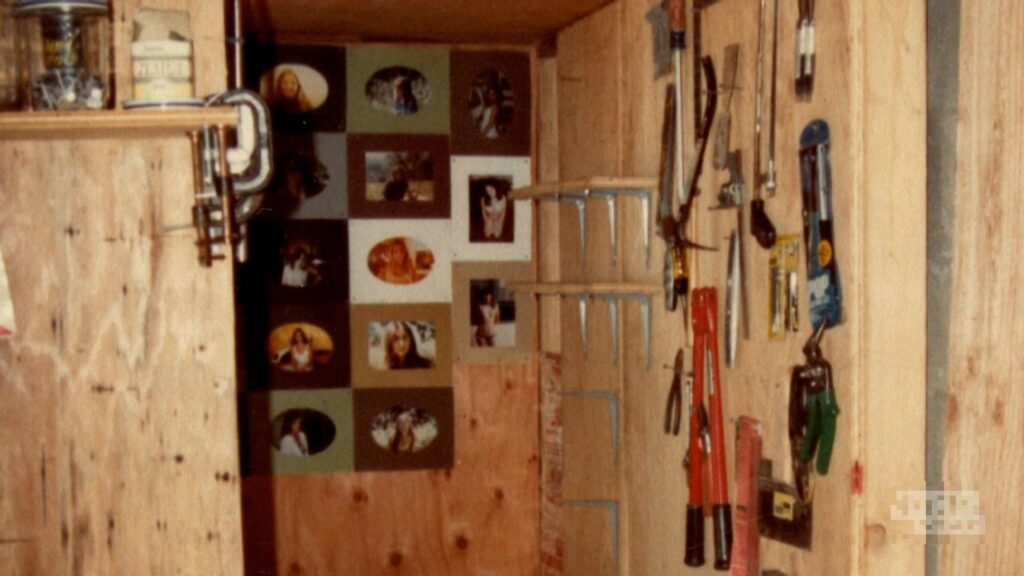
Of some of their victims they made “snuff films” – films that depict the victim’s murder. Lake’s second marriage ended when his wife discovered he been making amateur pornographic films featuring bondage acts. They were on good terms. Lake was devastated for a time after the divorce, yet he then felt free to do anything he wanted. There was a suspicion that his ex-wife knew what was happening. What makes him noteworthy was his compulsive diary keeping, where his extreme acts of sadism were faithfully recorded for posterity. Lake had built a structure described in his journals as a “dungeon.” Before Ng’s arrival, Lake is believed to have already murdered his brother Donald and his friend and best man Charles Gunnar. Gunnar’s body was unearthed from the property in 1992. Lake couldn’t make normal connections. He spoke of his envy of beautiful women and rich men who always end up getting the best of life. The fact that we could see videos of torture makes it hard to even analyze his personality.
In the video we see a woman and hear Lake: “If you go along with us, cooperate with us, we’ll be as nice as we can to you within the limits of keeping you prisoner. If you don’t go along with us, we’ll probably take you into the bed, tie you down, rape you, shoot you, and bury you. Sorry, lady, times up. Make your choice. Kathi (victim): “Well, I have to be available.” Lake: “That’s all we wanted to hear. While you’re here, we’ll keep you busy. You’ll wash for us, you’ll clean for us, cook for us, you’ll fuck for us. That’s your choice in a nutshell. It’s not much of a choice. Unless you have a death wish… If there’s any circumstance whatsoever that leads me to think you’re even attempting to make noise, it’s immaterial whether I hear you or anyone else hears you, you will be whipped very severely. Now tell me you understand.” Kathi: “I understand.” Lake: “I’m having a little war within myself between what I want to do and what we might call the decent thing to do. And for the moment the decent thing to do is winning. So rest. Ok, I want you to know I’m giving you this out of protest. Not that you’d care (laughs). Mind you. Brenda (another victim): “Are you going to let us go soon?” Lake: “Probably not.” Brenda: “Why are you doing this?” Lake: “Because we hate you. Your baby is going to be taken away.” They had already killed her baby, but she didn’t know this. Brenda: “What do you mean taken away?” Lake: “There’s a family in Fresno that doesn’t have a baby.” Brenda: “You’re not taking my baby away from me.” Ng: “It is better than the baby is dead, right?” Brenda: “What do you mean they’ve got one now? That’s my baby!” Lake: “Your baby is sound asleep, like a rock.” Brenda: “Why do you guys do this?” Lake: “We don’t like you. Would you like me to put it in writing?” Ng: “It’s done. Just take it whatever we tell you.” Brenda: “Don’t cut my bra off.” Lake: “Nothing is yours, you are totally ours.” Brenda: “That light’s hot. It’s making me sick.” Lake: “Suffer.” Brenda: “I’m going to pass out, because the light is so…” Ng: “Well you can pass out, but we’re going to wake you up.” Lake: “Brenda, I have a lot of animosity towards you and I would just as soon start you out with a nice firm whipping right now, to make you believe how serious we are.”
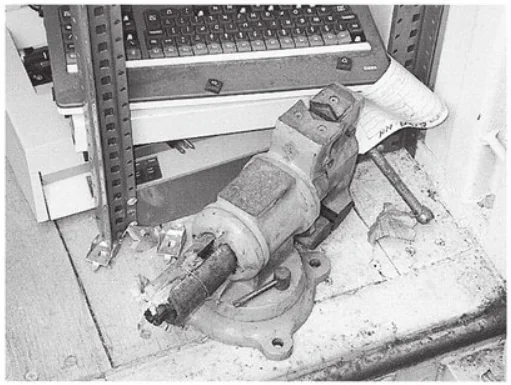
When confronted by the employee, Ng tossed the vise into the trunk of a 1980 Honda Prelude in the parking lot, then fled on foot. The police arrived minutes later. An officer looked into the car’s trunk and saw the stolen vise along with a .22 caliber pistol equipped with an illegal silencer. Lake asserted there was a misunderstanding and that he had paid for the vise; he was arrested for possessing the illegally modified weapon. Ironically, he was arrested for theft by a policeman who knew nothing of the torture-murders. The arresting officer noticed that Lake bore no resemblance to the photo on his California driver’s license, which bore the name of Robin Scott Stapley, a San Diego man reported missing by his family several weeks earlier.
Lake committed suicide by swallowing two cyanide pills. Charles Ng fled to Canada. Ng fought a protracted legal battle against extradition on the grounds that Canada, which did not have the death penalty for most offenses, would be violating the Canadian Charter of Rights and Freedoms by permitting him to stand trial in California for capital murder. Canada deported Ng to California.
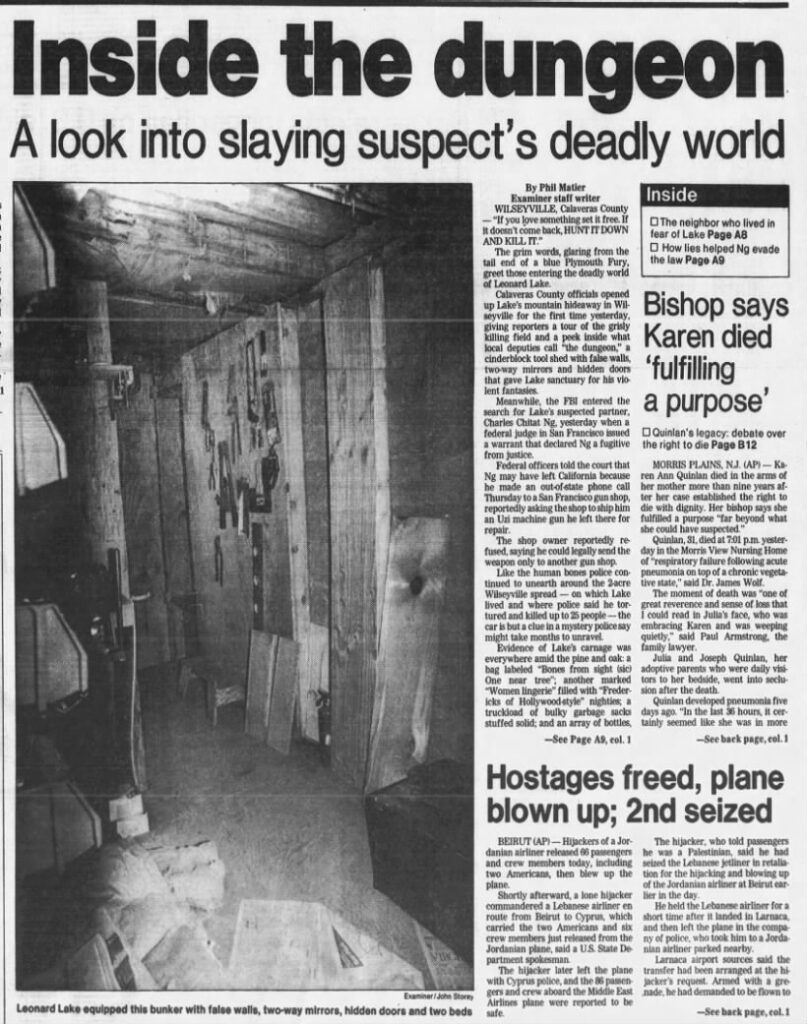
Ng was indicted on twelve counts of first-degree murder. Despite the video evidence and information in Lake’s voluminous diaries, Ng maintained that he was merely an observer and that Lake planned and committed all of the kidnappings, rapes, and murders unassisted. Psychiatrist Stuart Grassian testified that Ng had dependent personality disorder, but admitted under cross-examination that he had not viewed the tapes that showed Ng participating in the crimes. Clinical psychologist Abraham Nievod agreed with the diagnosis of dependent personality disorder and opined that Ng’s behavior in the tapes indicated that he was attempting to “mirror” and please Lake. Ng insisted on taking the stand in his own defense, which allowed prosecutors to introduce additional evidence that helped define Ng’s role in all aspects of the crimes. One significant item was a photo of Ng in his prison cell, with cartoons he had sketched of his victims hanging on the wall behind him.
In February 1999, Ng was convicted of eleven of the twelve homicides: six men, three women, and two male infants. Jurors found him not guilty on the twelfth charge, the murder of Paul Cosner, even though Lake and Ng had driven Cosner’s car for seven months since he went missing in November 1984, and Cosner’s California driver’s license had been found at the Wilseyville property. Ng was sentenced to death, and the presiding judge rejected a motion to reduce the sentence to life imprisonment.
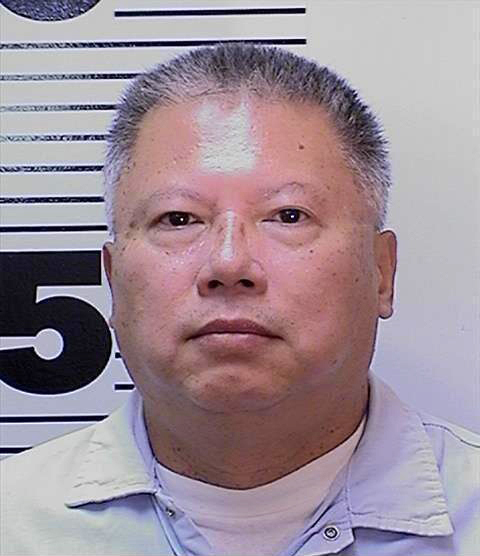
Capital punishment is not allowed to be carried out in the U.S. state of California, due to both a standing 2006 federal court order against the practice and a 2019 moratorium on executions ordered by Governor Gavin Newsom.
From psychoanalytical point of view, some would suggest the bondage and enslavement of Lake’s women victims were Lake’s antidote to the abandonment and neglect by his mother. Lake’s women victims were immobilized and held captive. His torture of a woman showed that he had godlike power over them, rather than the woman/mother having power over Lake. But his fury at his mother’s abandonment made him go the extra step and kill them. His mother asked him to take nude photos of girls and, just as David Parker Ray whose only connection with his father was through violent pornography, we may assume that it was the way he connected with his mother. Many of these kind of perpetrators are murdering their mothers over and over again by murdering other women. If this is true, there are other reasons which made him susceptible to these environmental factors. Lake also murdered men for financial gain and to capture their wife/girlfriends. If Lake hadn’t been a sadistic psychopath, nothing would have happened. He was probably schizoid personality. Charles Ng is a sadistic psychopath, experts also concluded that he had dependent personality disorder, his background points towards kleptomania among other issues.
Known victims:
| In December 1982, Donald was living with his mother in San Francisco, California when Leonard stopped by and asked Donald to come along to a house-sitting job. Donald was never seen again, and his mother reported him missing. Leonard resurfaced on New Year’s Day in 1983 to rent a room in a house under the name “Alan Drey”. Leonard had stolen Donald’s identity and began cashing his disability checks. Leonard also later forged a letter to their mother claiming to be Donald and that he had moved away to live with drug dealers in Reno, Nevada. |
| Four months later, Lake moved in with his friend, Charles Gunnar, 34. Gunnar was best man at Lake’s wedding in 1981. On May 22, 1983, Lake invited Gunnar to go on a road trip to Las Vegas after his divorce. Several days later, Lake returned alone in Gunnar’s van and said to acquaintances that Gunnar ran off with a woman. Gunnar was never seen again. After the murder, Lake stole Gunnar’s identity and began to cash his government checks. Lake introduced himself as Gunnar to most of the people he met while living in Wilseyville. Gunnar’s body was not found by police during the initial 1985 investigation, but was unearthed in 1992 when a subsequent owner of the Wilseyville property was digging down to install a footing for a new garage. |
| On May 1, 1984, Jeffrey Askren, 30, was reported missing after not showing up for work in Santa Clara, California. His late model Honda automobile was found three days later in the West Point area of Calaveras County, six miles from Lake’s home. His disappearance occurred within the time range of Lake’s killings although his remains have not yet been identified from those that were recovered at the Wilseyville site. |
| On July 11, 1984, Donald Albert Giulietti, 36, a radio personality from San Francisco, California was spending time in his apartment expecting a visitor. Giulietti was openly gay and lived with another man named Richard Carrazza. Giulietti placed a personal advertisement in a local newspaper offering to give oral sex to straight men. That night a stranger knocked on the door and as soon as Giulietti opened the door, a man whipped out a pistol and shot him in the head at close range. Carrazza was also immediately shot in the chest. The individual fled and Carrazza called the police. Carrazza, the only known survivor victim of Lake or Ng, would go on to identify Ng as the shooter. |
| Harvey Dubs, 30, Deborah Ann Dubs, 33, and Sean Christopher Dubs, 1, went missing on July 25, 1984, from their San Francisco home. On the night they disappeared, Deborah was speaking on the telephone to a friend when the doorbell rang at their apartment. Deborah told her friend that she had to end the conversation, as two men had arrived. The Dubs family have never been heard from again. A receipt in Harvey’s name, and video equipment from the Dubs’ home were found at Lake’s cabin. |
| In July 1984, Maurice Rock, 37, disappeared from a San Francisco rooming house. Lake had rented a room at the same establishment under the pseudonym “Alan Drey”. Sometime after Rock disappeared, the woman renting the room next to Rock saw a man removing a refrigerator from his room. The man introduced himself as “Steve” and offered to photograph her. She agreed but felt unsettled and changed her mind once he came to her room with his camera equipment. She later identified the man as Lake. Rock’s remains were recovered from the Wilseyville property. |
| On October 15, 1984, Randy Jacobson, 35, also disappeared from a San Francisco rooming house after becoming involved in a business deal with Lake. His identity was subsequently stolen by Lake who tried to steal Jacobson’s van after the murder, but was unsuccessful as the van was towed away before he was able to move it. Jacobson’s remains were buried on the Wilseyville property. |
| On November 2, 1984, Paul Steven Cosner, 39, was last seen in San Francisco, California. His brown 1980 Honda Prelude disappeared with him. Cosner had advertised the vehicle for sale in a local newspaper and went missing when he went to show his car to a potential buyer he described as “weird”. Lake was arrested with Cosner’s car on June 2, 1985. Cosner’s remains have never been found. |
| On November 16, 1984, Sheryl Okoro, 25, disappeared from the same San Francisco rooming house where Rock had disappeared. Photographs, an 11-page letter written by Okoro, and her remains were recovered from the Wilseyville property. |
| On January 20, 1985, Clifford Raymond Peranteau, 23, went missing from San Francisco. He was a coworker of Ng at Dennis Moving Company and in April 1985, Lake sold Peranteau’s motorcycle to a man in West Point, California. Several of Peranteau’s personal belongings were discovered in an apartment owned by Ng. |
| On February 24, 1985, Jeffrey Dean Gerald, 25, went missing from San Francisco after saying he was going to help Ng move for a side job. |
| On April 12, 1985, Michael Carroll, 22, who had served with Ng in Fort Leavenworth, and his girlfriend Kathleen Allen, 18, were spending time in a Milpitas, California motel room. At 10 p.m., Carroll told Allen that he had to leave but he never returned. On April 14, Allen received a phone call at her workplace and was told that Michael was at Lake Tahoe and may have been shot. She immediately told her boss that she had to leave and she was last seen getting into a car with Lake. Allen appeared in a videotape found at Lake’s home and her last paycheck was sent to a town near his cabin. Carroll was also mentioned in the videotape and his driver’s license was found at the property. |
| On April 19, 1985, Lonnie Bond Sr., 27, his live-in girlfriend Brenda O’Connor, 20, their son, Lonnie Bond Jr., 1, and a family friend, Robin Scott Stapley, 26, went missing from Wilseyville. When Lake was arrested on June 2, Lonnie’s license plate was affixed to the car he was driving. The bodies of Lonnie Sr. and Stapley were found buried at Wilseyville in a shallow grave about a mile from Lake’s property. O’Connor and Lonnie Jr. have never been found. |
